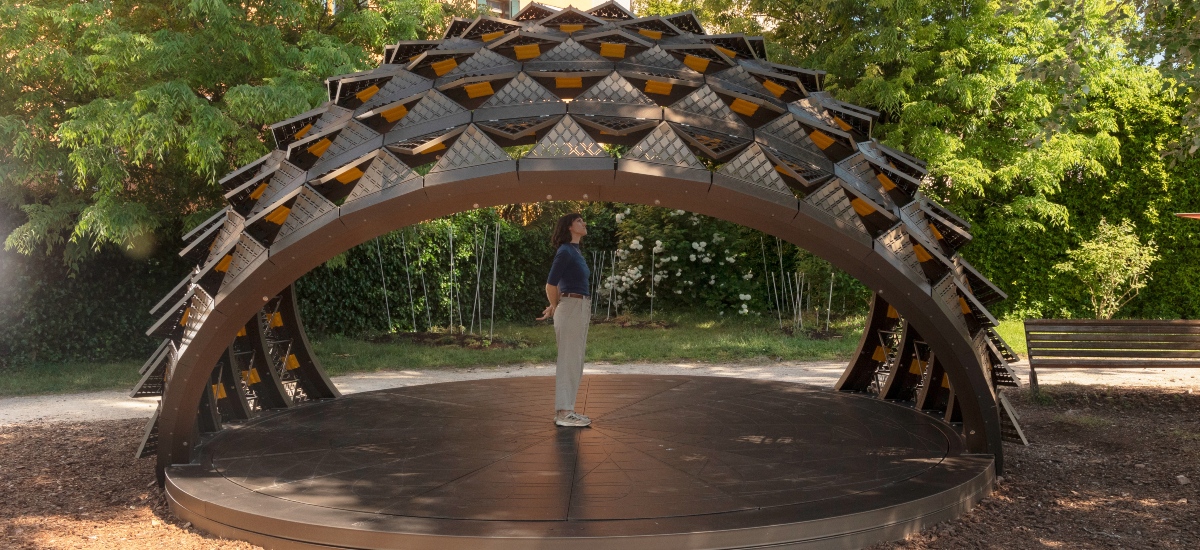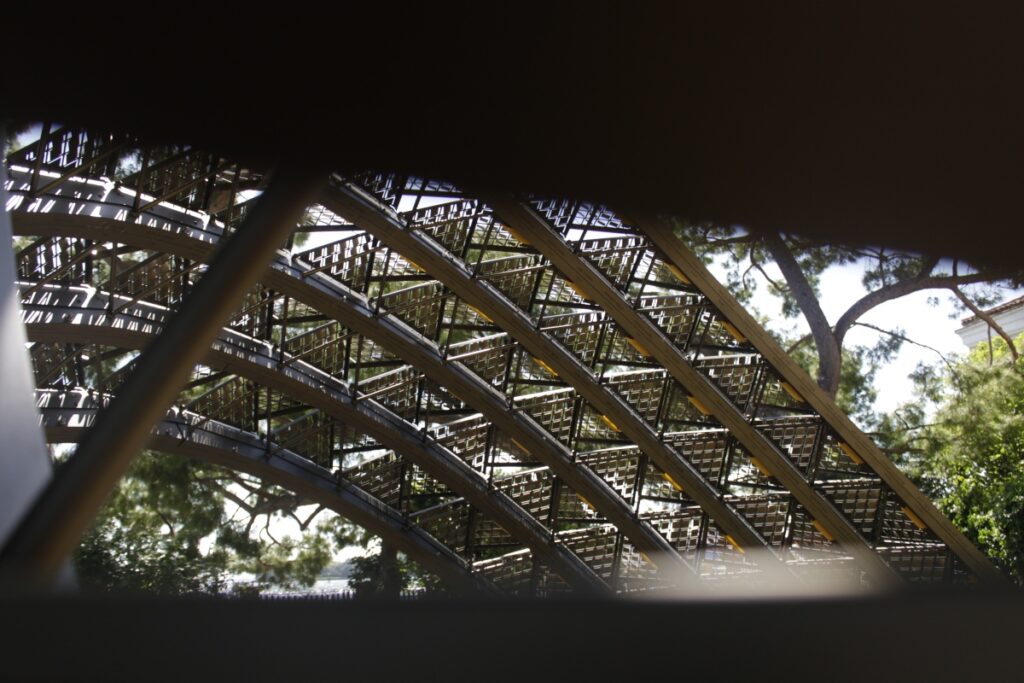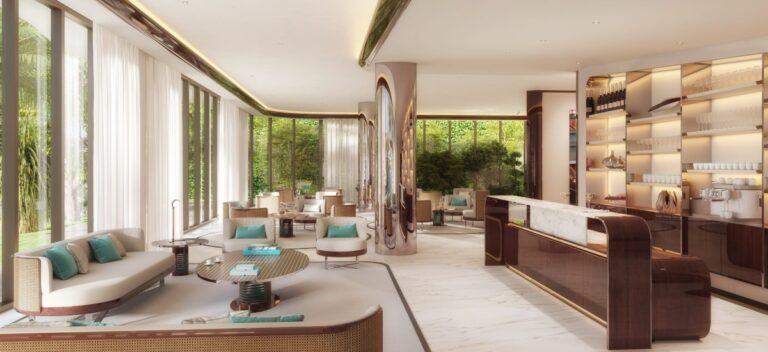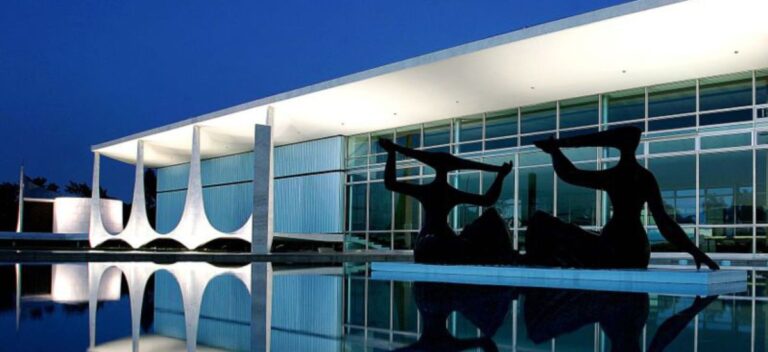SOMBRA, named from the Latin fusion of sol (sun) and umbra (shade), exemplifies a future where buildings adapt without motors or electronics.
This architectural installation is part of the Time Space Existence exhibition, running throughout the summer and into autumn.
Powered by Nature, Not by Machines
The pavilion owes its motion to purely passive physical principles. There are no circuits or wires—only sunlight and air.
The structure’s responsive elements use small air canisters, which react when heated by solar rays.
As the internal pressure increases, air flows into inflatable components, gently moving hinged panels.
This creates a system that behaves almost organically. As the sun shifts, the pavilion alters its posture, giving more or less sombra (shade in spanish) based on solar intensity.












